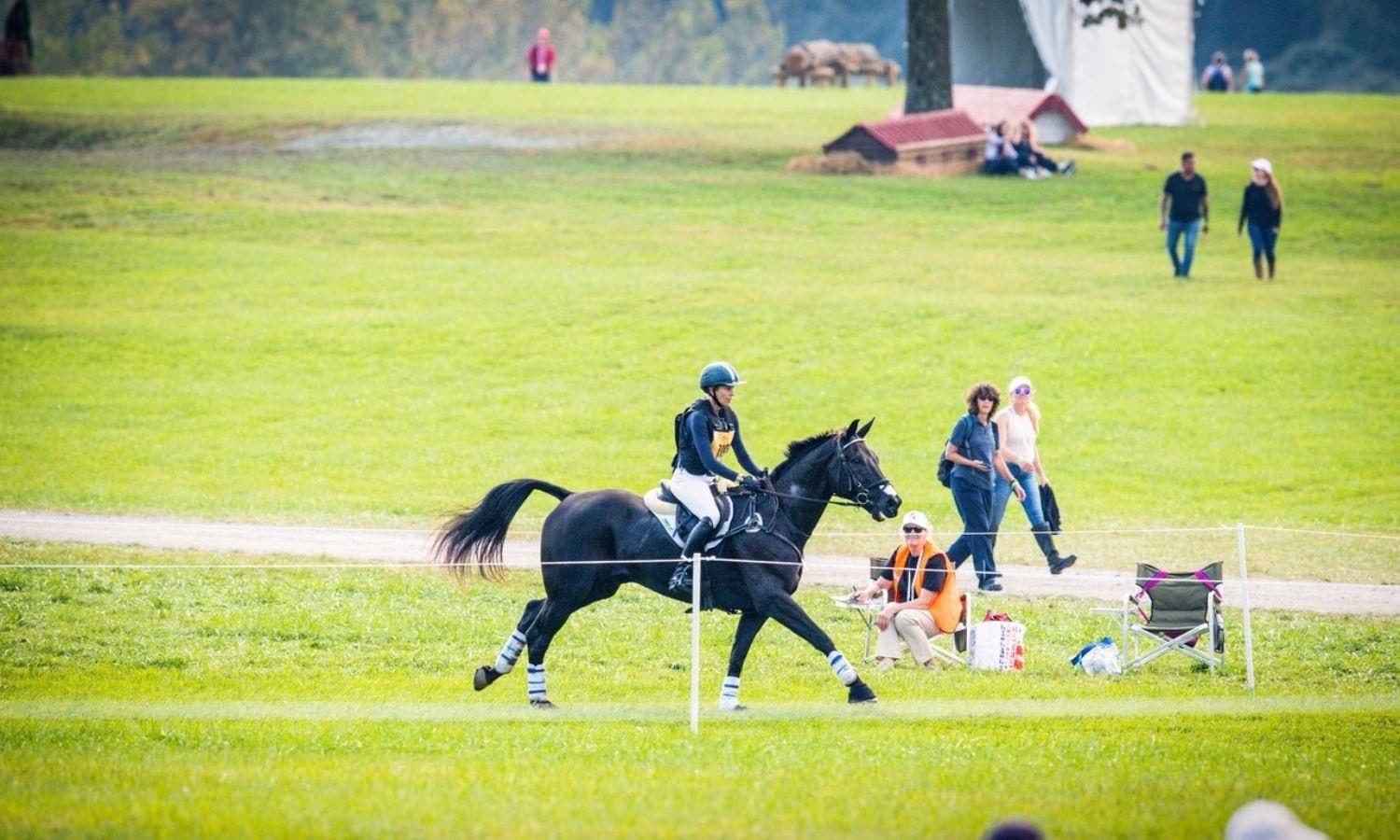Cross-Country Warm-Up: The Grand Finale

This article originally appeared in the September Issue of Sidelines magazine.
Welcome back, all, to the third and final edition of our mini-series about warm-ups! For those of you just joining us, we’ve been breaking down warm-up strategies for eventing when all three phases are in one day.
It’s a unique format, and some say the ultimate test, requiring the most fitness of horse (and rider!)—and it certainly requires the most strategy. At this point, you’ve made it through the first two phases and now, finally, the cross-country grand finale—the reason that you’re at the event in the first place!
Even though your adrenaline is pumping and you’re super excited for cross-country, you have to take a mental moment and assess how things have gone so far. You just finished show jumping—was your horse behind your leg? Drifting? Rushing? Has he been nervous all day, or dull? If so, this now becomes the priority of your cross-country warm-up so that you can address it in the few minutes you have before you head out on course. It’s not going to magically fix itself on the walk over to the start box! And let’s face it, you can double your entire score of the day in just one second on cross-country. Take a few moments and debrief over why you had any rails, or maybe where you were lucky that you didn’t have any rails. Hopefully you had a beautiful, clear round, and can do a mostly normal warm-up routine to conserve your strength.
The timeline usually allows 20 minutes between phases, so move with a purpose. As you walk over to your start, go over your cross-country course out loud, fence by fence, like you were doing one last course walk. Address your minute markers if you know them, or speed fault time and optimum time so you don’t panic about that at the start box. This will allow you to focus on the fences once you get to the warm-up, and perhaps be able to watch that one combination that you were worried about, if you can see it from there!
Check in with the ring steward and find out how many riders you have ahead of you—you need to be careful not to overdo your warm-up as you just “warmed up” in show jumping! Some horses do best to warm up and then stand and chill and catch their breath. Others should do the standing first, then jump their fences and boogie straight to the box. Take note over time which strategy seems to be best for you and your horse and stick to it so your horse can start to rely on the system. It will calm the nerves for both of you!
Personally, I never actually jump any show jumps in cross-country warm-up. I want my horses to know the job they are about to do, and because show jumping is now in the past, I want them to have ears pricked for the solid obstacles only. Hopefully the competition has provided a variety of fences, although I know sometimes at the lowest levels there aren’t many options. Assess your fences and take a big lap around the ring, opening up your horse’s stride and airways, and get familiar with how you can make a realistic approach that doesn’t cause you to take away the on-course feeling that you want out of the box. Remember, you should have much longer approaches and getaways than what you were just practicing for show jumping.
Start over the fence with the most friendly shape: a roll-top or cabin or log, something with a good ground line and a round profile—it will start everyone out with confidence. Don’t feel bad repeating it if it’s not forward and straight, or out of stride. Then look for something more spooky—colorful, has cutouts or designs—or something bigger. If you have a combination on course that will require angles, set the horse up for the same angle and make sure you can hold the same line as required on course. If you need to jump a corner and one isn’t available, angle a fence and jump it close to a flag to get the desired effect. If you have a skinny on course, jump one in warm-up once you have your horse keen and confident.
Warm-up is designed to keep their confidence, not test them or scare them two minutes before they go out on course. Less is always more! If you have a bold horse, consider jumping your last fence a little steady to make sure the brakes work. If you’re just moving up, make yourself jump that big jump out of a galloping stride like you’re going to fly over the first three fences out there, and then go do it! Kick on and never look back!














